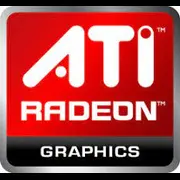ATI FirePro V7900

ATI FirePro V7900: A Professional Tool in the Era of Modern Technologies
April 2025
Introduction
The ATI FirePro V7900 is a professional graphics card released by AMD in 2011. Despite its age, it can still be found in some workstations, especially in niche scenarios. In 2025, its relevance raises questions, but for certain tasks, it remains an interesting solution. Let's explore who might still find this model useful today.
1. Architecture and Key Features
Architecture: The FirePro V7900 is built on the TeraScale 2 microarchitecture, which debuted in 2009. This generation is focused on parallel computing and optimized for workloads rather than gaming.
Process Technology: It uses a 40 nm process technology, which is extremely outdated by today's standards (5 nm for flagship models in 2025). This affects energy efficiency and heat dissipation.
Unique Features:
- Support for OpenCL 1.1 and DirectX 11, which is relevant for specialized software.
- Eyefinity technology allows for connecting up to 4 displays simultaneously.
- Absence of modern features such as Ray Tracing, DLSS, or FidelityFX — the card was created long before these technologies emerged.
Conclusion: The TeraScale 2 architecture ensures stability in professional applications but is unsuitable for tasks requiring modern APIs or AI acceleration.
2. Memory
Type and Volume: The FirePro V7900 is equipped with 2 GB of GDDR5 memory on a 256-bit bus. In comparison, modern professional cards (like the Radeon Pro W6800) use 32 GB of GDDR6.
Bandwidth: 128 GB/s is a modest figure even for budget GPUs in 2025 (the NVIDIA RTX 4060, for example, offers 360 GB/s).
Impact on Performance:
- Pro: For basic tasks such as 2D editing or working with CAD models, 2 GB may be sufficient.
- Con: Rendering complex 3D scenes or working with 4K video will cause a bottleneck due to memory limitations.
3. Gaming Performance
The FirePro V7900 is a professional card, and its gaming capabilities are limited even in 2025. Examples of FPS (on low settings):
- CS2 (1080p): ~40-50 FPS.
- GTA V (1080p): ~30 FPS.
- Cyberpunk 2077 (1080p): Not playable (less than 15 FPS).
Resolution Support:
- 1080p: Minimally acceptable for older games.
- 1440p/4K: Not recommended — lack of memory and low computing power.
Ray Tracing: Not supported. Modern games with RTX will run only on software rendering (extremely slowly).
4. Professional Tasks
Video Editing:
- Suitable for editing at resolutions up to 1080p in programs like Adobe Premiere Pro (with limited effects).
- 4K videos will cause lag even in DaVinci Resolve.
3D Modeling:
- Compatible with AutoCAD and SolidWorks, but complex projects require optimization.
- Rendering in Blender (Cycles) will take much longer than on modern GPUs.
Scientific Calculations:
- OpenCL support allows the card to be used for simple calculations, but the lack of FP64 (double precision) limits scenarios.
- CUDA acceleration is not available — this is the NVIDIA ecosystem.
5. Power Consumption and Heat Dissipation
TDP: 150 W — quite modest even for 2025 (for comparison: RTX 4090 — 450 W).
Cooling: Turbine with a single fan. Noise level — up to 38 dB, which is higher than modern models with passive cooling.
Recommendations:
- Case with good ventilation (2-3 intake fans).
- Avoid compact builds — the card is 24 cm long and requires space.
6. Comparison with Competitors
AMD Radeon Pro W6600 (2021):
- 8 GB GDDR6, RDNA 2 architecture.
- Price: $649 (new in 2025).
- Performance is 3-4 times higher.
NVIDIA Quadro T400 (2021):
- 4 GB GDDR6, CUDA support.
- Price: $200.
- Better suited for machine learning.
Conclusion: The FirePro V7900 falls short even against budget models from 2021-2023, but it can serve as a temporary solution for a limited budget ($50-100 on the secondary market).
7. Practical Tips
Power Supply: Minimum of 450 W (with headroom for the other components).
Compatibility:
- Requires a PCIe 2.0 x16 slot.
- Supports Windows 10/Linux (drivers up to 2020). Windows 11 may work with limitations.
Drivers: Use the AMD FirePro Professional Edition package — it is optimized for stability rather than performance.
8. Advantages and Disadvantages
Advantages:
- Reliability and durability (quality components).
- Support for multi-monitor configurations.
- Low price on the secondary market.
Disadvantages:
- Outdated architecture.
- Limited memory for modern tasks.
- No support for new APIs and technologies.
9. Final Conclusion: Who is the FirePro V7900 Suitable For?
This graphics card is an option for a very narrow audience:
1. Owners of old workstations who need to replace a burnt-out GPU without upgrading the entire system.
2. Retro PC enthusiasts building computers from the 2010s era.
3. Budget projects requiring multi-display support (e.g., digital signage).
Why not consider it in 2025?
For gaming, 3D rendering, machine learning, and working with 4K/8K content, the FirePro V7900 is hopelessly outdated. Even budget modern GPUs (like the Radeon RX 6400 for $150) offer more capabilities.
Conclusion
The ATI FirePro V7900 is a relic of the past, retaining niche value. It serves as a reminder of how quickly technology evolves and teaches a lesson: even professional hardware requires timely upgrades. If your budget is limited to $100 and your tasks are simple — take a look at it. In all other cases — choose modern solutions.
Basic
Memory Specifications
Theoretical Performance
Miscellaneous
Benchmarks
Compared to Other GPU
Share in social media
Or Link To Us
<a href="https://cputronic.com/en/gpu/ati-firepro-v7900" target="_blank">ATI FirePro V7900</a>